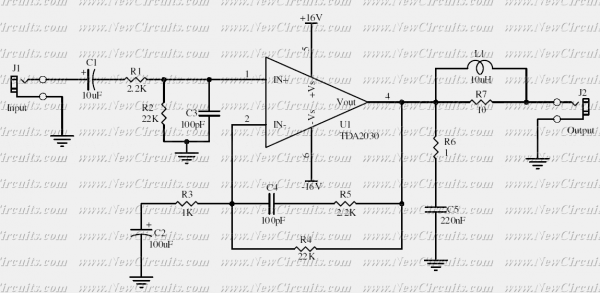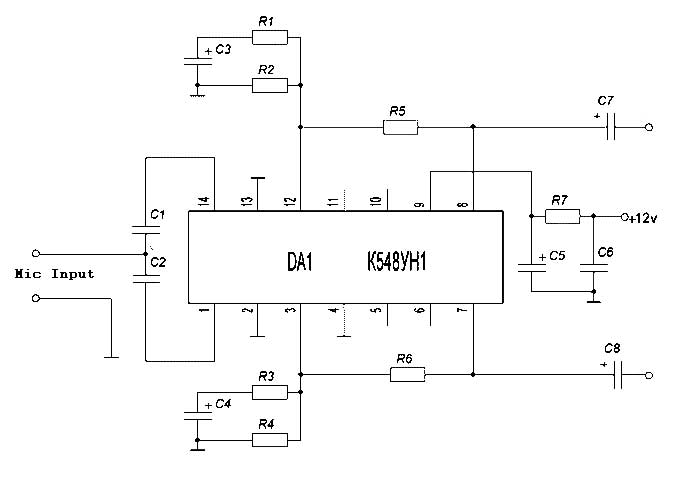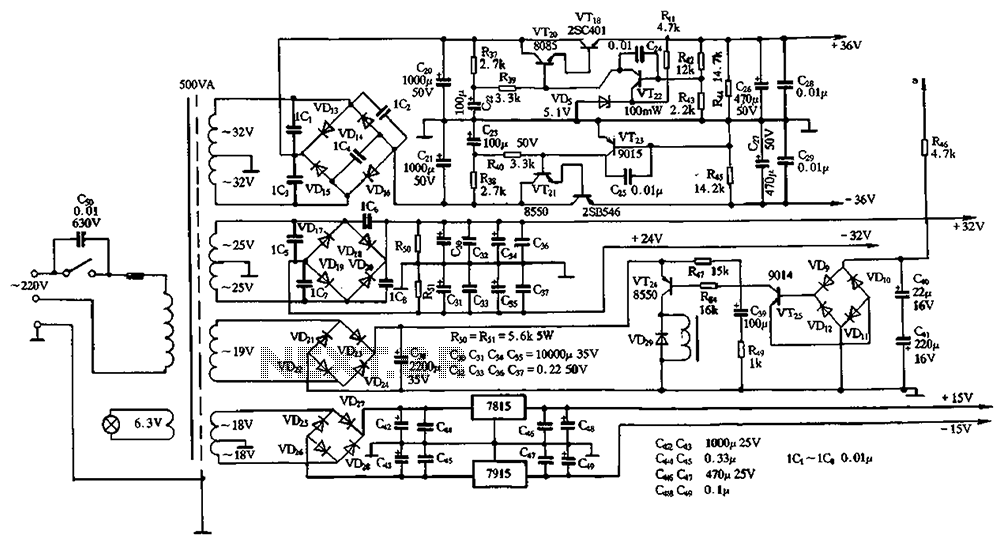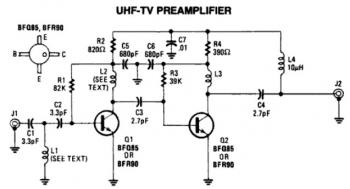
LM317 audio amplifier

The LM317 integrated circuit is commonly recognized as an adjustable voltage regulator; however, it can also function as an audio amplifier. This configuration represents a Class A audio amplifier utilizing the LM317, capable of delivering a maximum audio power output of 1W. A suitable heatsink is recommended for optimal performance.
The circuit utilizes the LM317 voltage regulator in a non-traditional role as an audio amplifier. In this application, the LM317 operates in Class A mode, where it is biased to conduct for the entire audio signal cycle, ensuring low distortion and high linearity. The circuit typically comprises the LM317, several passive components including resistors and capacitors, and an appropriate heatsink to dissipate the heat generated during operation.
To construct the amplifier, the input audio signal is fed into the non-inverting input of the LM317. The gain of the amplifier can be adjusted by selecting appropriate resistor values connected to the adjustment pin of the LM317. The output is taken from the output pin, which can drive small speakers or headphones, providing a maximum output power of 1W.
It is crucial to ensure that the LM317 is adequately cooled, as operating in Class A mode can lead to significant heat generation. A heatsink with sufficient thermal dissipation capacity should be attached to the LM317 to prevent thermal shutdown and ensure reliable operation.
In addition to the basic components, bypass capacitors may be included at the input and output to filter any high-frequency noise, enhancing the overall audio quality. Proper layout and grounding techniques should be employed to minimize interference and maintain signal integrity.
Overall, using the LM317 as an audio amplifier is an innovative application that showcases the versatility of this integrated circuit beyond its conventional use as a voltage regulator.You probably know that LM317 IC is used as an adjustable voltage regulator, but did you know it can be used as an audio amplifier? This is a class A audio amplifier built with LM317 that delivers a maximum 1W audio power. Use a good heatsin.. 🔗 External reference
The circuit utilizes the LM317 voltage regulator in a non-traditional role as an audio amplifier. In this application, the LM317 operates in Class A mode, where it is biased to conduct for the entire audio signal cycle, ensuring low distortion and high linearity. The circuit typically comprises the LM317, several passive components including resistors and capacitors, and an appropriate heatsink to dissipate the heat generated during operation.
To construct the amplifier, the input audio signal is fed into the non-inverting input of the LM317. The gain of the amplifier can be adjusted by selecting appropriate resistor values connected to the adjustment pin of the LM317. The output is taken from the output pin, which can drive small speakers or headphones, providing a maximum output power of 1W.
It is crucial to ensure that the LM317 is adequately cooled, as operating in Class A mode can lead to significant heat generation. A heatsink with sufficient thermal dissipation capacity should be attached to the LM317 to prevent thermal shutdown and ensure reliable operation.
In addition to the basic components, bypass capacitors may be included at the input and output to filter any high-frequency noise, enhancing the overall audio quality. Proper layout and grounding techniques should be employed to minimize interference and maintain signal integrity.
Overall, using the LM317 as an audio amplifier is an innovative application that showcases the versatility of this integrated circuit beyond its conventional use as a voltage regulator.You probably know that LM317 IC is used as an adjustable voltage regulator, but did you know it can be used as an audio amplifier? This is a class A audio amplifier built with LM317 that delivers a maximum 1W audio power. Use a good heatsin.. 🔗 External reference





